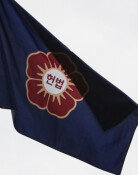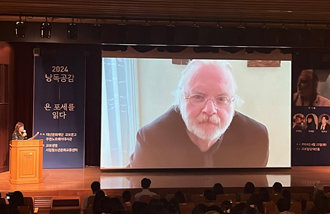Multi-national Fast Food Threatens Our Kids
Multi-national Fast Food Threatens Our Kids
Posted March. 21, 2005 22:40,
Imports for food designed for childrens palates have increasingly originated from China, Southeast Asia, and Africa, and the complex distribution route makes it increasingly difficult to monitor health standards.
A detailed health inspection by the Ministry of Health resulted in the discovery of heavy metals, detrimental food coloring, and germs in the food, proving the fears to be grounded in reality.
The production and distribution of childrens food, as well as its sanitation, was observed.
Who makes it and how is it sold?-
At a residential district at Gyeyang-gu, Incheon on March 21, a spiced jerky production company exists in a corner of a house, where beef jerky pieces are machine-stamped after being dipped in sauce. Hardly a factory, the owner and two mid-aged women employees are busy stamping out the spiced jerky pieces. The jerky is piled in a basket without separate packaging.
When asked about the expiration date, the owner said theres no expiration date, and that Chinese products are worse, cleanliness-wise.
Imported products are shipped in and receive inspections from the Korean food and drug administration. But the problem lies in distribution. After passing through the immigration office, as many as several months may lapse before the food finally enters childrens mouths.
The primary wholesale merchants pile the food in a storage house in the provinces. In the case of Seoul, secondary wholesale merchants in large wholesale markets such as the Cheongryangri market come and purchase the product.
An intermediary merchant, Mr. Lee (37) of D Distributions, said, Because of the failing economy, wholesale marketing for childrens food that generates low but steady profits has increased sharply.
The final wholesale merchant receives the product and sells it around stationary stores while hauling it around in a truck. Mr. H, a store owner in front of A Elementary School located at Gaepo-dong, Gangnam-gu, Seoul, said, When the wholesale merchants come once every two days, we purchase 20,000 to 30,000 won worth of food, and in our town the kids love it so much that we sell it all during this period. But he also said, Im a little concerned about the jerky, since theres no expiration date on the package.
Analyzing the sanitary conditions-
The Incheon division of the Consumers Union of Korea and the Incheon Health and Environment Research Institute recently collected 150 types of food sold in 15 school districts in Incheon, and performed heath inspections. They found germs causing food poisoning and heavy metals in more than half the products.
In octopus legs and squid legs, eight out of nine yielded germs, where some resulted in 200,000 CFU (colony forming units) per mL. It is a high rate, considering that drinking water holds around 100 CFU.
In Chinese Magic Sprays, a sweet water spray candy, 1,000,000 CFU-enough to cause food poisoning-was detected. In the plastic container of the Hong Kong-made Magic Popping, 639.1 ppm of lead was detected, 6.4 times more than the limit of 100ppm. In gums and candies, heavy metals such as lead and cadmium were detected.
In Gwangju a type of candy with unknown origins sold in front of schools were found to have Red Dye Number Two.
A source from the Gwangju Health and Environment Research Institute said that Red Dye Number Two that attracts children with its bright dark color is classified as carcinogenic in developed countries such as the U.S., causing allergies and asthma, and is prohibited in foods.
Dr. Lee Gyu-rae, a general practitioner at Ghil Hospital of Inchons Gachon Medical School, said If growing children keep eating food contaminated with heavy metals, it will accumulate in the body and affect their growth plate, causing adverse effects to growth, and that short term effects include inflammation of the intestines, which may lead to a loss of vision.
Jun-Ho Cha run-juno@donga.com weappon@donga.com
Headline News
- Med professors announce intention to leave hospitals starting Thursday
- Bridge honoring Sgt. Moon Jae-sik unveiled in Pennsylvania
- Chief of Staff Chung tells presidential secretaries to stay away from politics
- US FTC bans noncompete agreements
- N. Korea launches cyberattacks on S. Korea's defense companies







